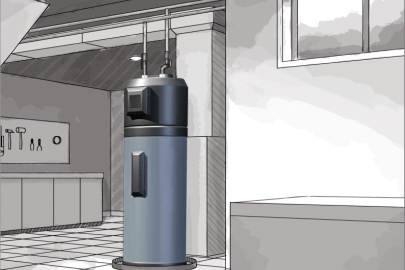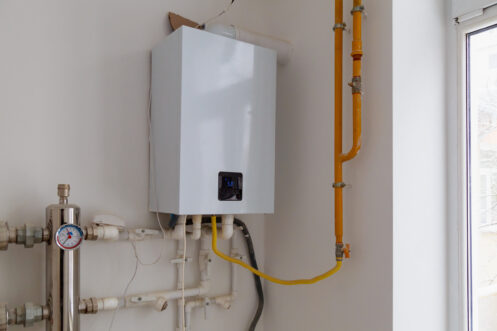Simple Guide to Maintaining Your Home's Hot Water System
Simple Guide to Maintaining Your Home's Hot Water System
Blog Article
Listed here in the next paragraphs you can find additional first-rate expertise when it comes to Water Heater Maintenance Tips You Can't Afford to Forget.

Hot water is essential for day-to-day convenience, whether it's for a refreshing shower or cleaning meals. To ensure your warm water system runs efficiently and lasts much longer, routine maintenance is vital. This short article provides functional suggestions and understandings on exactly how to keep your home's warm water system to prevent disruptions and costly fixings.
Intro
Preserving your home's hot water system could appear difficult, yet with a couple of easy actions, you can ensure it operates efficiently for many years to come. This overview covers every little thing from comprehending your hot water system to do it yourself maintenance tips and recognizing when to employ professional help.
Relevance of Preserving Your Hot Water System
Normal maintenance not just prolongs the lifespan of your warm water system however also guarantees it operates successfully. Overlooking maintenance can cause decreased performance, higher power expenses, and even early failure of the system.
Indicators Your Hot Water System Demands Maintenance
Recognizing when your hot water system requires interest can prevent significant issues. Watch out for signs such as irregular water temperature, odd noises from the heating system, or rusty water.
Flushing the Hot Water Heater
Flushing your hot water heater removes sediment build-up, enhancing performance and extending its life.
Monitoring and Changing Anode Rods
Anode rods stop corrosion inside the storage tank. Inspecting and replacing them when broken is essential.
Facility Issues Needing Specialist Help
Instances include major leakages, electrical issues, or if your hot water heater is consistently underperforming.
Regular Specialist Maintenance Perks
Professional maintenance can include extensive examinations, tune-ups, and making certain compliance with security criteria.
Inspecting and Changing Temperature Level Settings
Readjusting the temperature level settings makes sure optimum efficiency and safety.
DIY Tips for Upkeep
You can execute several maintenance jobs on your own to maintain your hot water system in top condition.
Looking for Leakages
Regularly examine pipes and links for leakages, as these can bring about water damages and greater costs.
Understanding Your Hot Water System
Before diving into upkeep jobs, it's handy to understand the basic components of your hot water system. Usually, this consists of the hot water heater itself, pipelines, anode poles, and temperature level controls.
Month-to-month Upkeep Tasks
Normal month-to-month checks can help catch minor issues before they escalate.
Testing Pressure Relief Valves
Testing the pressure relief valve ensures it functions correctly and prevents excessive pressure buildup.
Insulating Pipes
Insulating warm water pipelines lowers warmth loss and can conserve power.
When to Call an Expert
While do it yourself maintenance is useful, some issues require professional proficiency.
Verdict
Normal upkeep of your home's hot water system is vital for effectiveness, longevity, and cost financial savings. By adhering to these ideas and understanding when to seek professional help, you can make certain a trusted supply of hot water without unexpected disruptions.
How to Maintain an Instant Hot Water Heater
Before tinkering with your hot water heater, make sure that it’s not powered on. You also have to turn off the main circuit breaker and shut off the main gas line to prevent accidents. Also turn off the water valves connected to your unit to prevent water from flowing into and out of the appliance. 2. When you’re done, you have to detach the purge valves’ caps. These look like the letter “T†and are situated on either side of the water valves. Doing so will release any pressure that has accumulated inside the valves while at the same time avoid hot water from shooting out and burning your skin. 3. When the purge valves’ caps are removed, you have to connect your hosing lines to the valves. Your unit should have come with three hoses but if it didn’t, you can purchase these things from any hardware or home repair shops. You can also get them from retail stores that sell water heating systems. Read the user’s manual and follow it to complete this task properly. When the hosing lines are connected, open the purge port’s valves. 4. You should never use harsh chemical cleaners or solutions when cleaning your unit. Make use of white vinegar instead. It should be undiluted and you’ll probably use about 2 gallons. 5. Now flush your water heater. This task should probably take about 40 minutes. We can’t give you specific directions for this because the procedure is carried out depending on the type, model and brand of your heater. With that being said, refer to the user’s manual. 6. When you’re done draining the unit, you have to turn off the purge port valves again. Remove the hosing lines that you earlier installed on each of the water valves. Put the valve caps (purge port) back in their respective places and be very careful so as not to damage the rubber discs that are found inside these caps. 7. Now that everything’s back in place, check your user’s manual again to find out how to reactivate your water heating system. 8. Once it is working, turn one of your hot water faucets on just to let air pass through the heater’s water supply pipes. Leave the tap on until water flows smoothly out of it. https://www.orrplumbing.com/blog/2014/september/how-to-maintain-an-instant-hot-water-heater/

I was brought to that write-up on What Kind of Maintenance Do Water Heaters Need? through an acquaintance on our other site. Please take the opportunity to promote this blog post if you appreciated it. Thanks for being here. Return soon.
Further Details Report this page